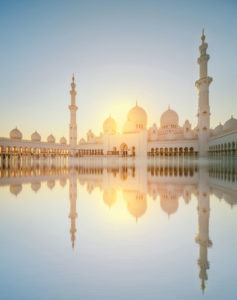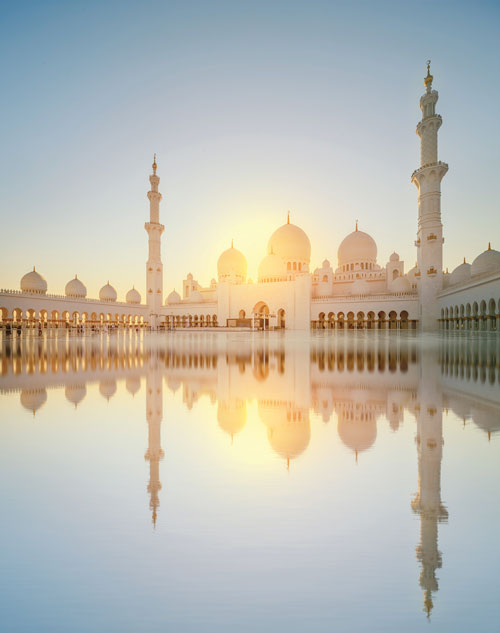Asian travellers no longer regard the UAE as just a transit stop or business travel location, enticed by an expansion in its mid-market hotel supply as well as new offerings. TTG Asia reports

The Middle East is seeing Asian travel markets grow in importance as destinations in the UAE, Qatar and Oman increasingly establish themselves as leisure spots.
“Asian travellers into the (Middle East) continue to increase year-on-year, with particularly strong interest from India and China,” said Rustom Vickers, vice-president for development, Dusit International.
Dusit’s expansion into the Middle East is driven by “the solid dynamics of the regional hotel industry, coupled with a young and increasingly affluent population that will support growth over the long term,” Vickers added.
Thirayuth Chirathivat, CEO of Centara Hotels & Resorts, added that the region’s draw lies partially in its geography.
“This ‘middle ground’ between east and west with hundreds of millions of potential customers within a very acceptable flying time (will) be a continued magnet,” he commented.
Malaysian outbound agents selling the Middle East said interest has steadily risen for Dubai and Abu Dhabi as holiday destinations over the last five years due to the growing number of attractions.
They sell tours combining Abu Dhabi and Dubai, and the main attractions include shopping, desert safaris and city tours featuring the architecture and iconic buildings such as Burj Al Arab Jumeirah and Burj Khalifa.
Karan Anand, relationships head at India’s Cox & Kings, agreed: “Abu Dhabi, Dubai and Qatar are no longer only transit destinations as they are visited by leisure tourists in large numbers.
“The emirates have become an amalgamation of varied activities and experiences, thus breaking the stereotype of them being mostly visited for corporate trips,” he said, pointing to existing attractions like underwater aquariums in Dubai, kitesurfing and scuba diving in Qatar, falcon shows in Ras-Al-Khaimah and Islamic art in Abu Dhabi.
As well, theme parks such as Ferrari World Abu Dhabi and Bollywood Parks Dubai (opening in October) have captured interest from Indian travellers, outbound travel chiefs told TTG Asia.
Similarly for the Japanese market, “unique architecture and entertaining theme parks in Dubai and Abu Dhabi have really caught the eye of Japanese tourists”, according to Yoshio Mogi, president of Trans Global Tour.
Mogi said: “The Middle East has done a lot to improve its stereotypical image of being a ‘desert’, which has enabled it to reach out to new target markets.”
Natsumi Suzuki, sales executive at Destination Consultants, shared that some Japanese clients are requesting transits in the hub cities of Dubai, Doha and Abu Dhabi for sightseeing. “With so many hotels and new attractions opening there each year, visitors can see something new every time they go.”
Australia’s Intrepid Travel, which specialises in small group adventure travel, also sees Dubai as a rising star. Said destination manager for the Middle East and Turkey, Daniella van Haltren: “Our Dubai stopover has been the real surprise this year with growing sales, particularly for solo female travellers. Travellers are booking this trip as a standalone destination, reinforcing our belief that there’s more to Dubai than meets the eye.”
And as Dubai gears up to host the 2020 World Expo with more tourism-related infrastructure, agents are expecting that this high-profile event will garner greater worldwide interest for the city.
Greater affordability is another factor driving demand for holidays in the UAE.
Kerry Tam, general manager at Malaysia’s Parlo Tours, said the growing number of three- and four-star hotels has made the UAE more affordable, improving from five years ago when budget accommodation was scarcer.
Desmond Lee, group managing director of Apple Vacations & Conventions, added that regular promotions by Emirates and Etihad Airways have also made the destination more affordable to many middle-class Malaysians.
India is also enjoying greater airlift to Abu Dhabi and Dubai, in part due to “major airline alliance offering seamless connectivity from tier-one and -two Indian cities,” remarked Anand.
However, outbound agents in Singapore and Hong Kong do not see the same enthusiasm for the Middle East as a leisure travel destination.
“(Our most requested Middle Eastern destinations – Turkey, Egypt, Israel and Dubai) wax and wane in popularity among leisure travellers as security concerns remain one of the main factors determining travel demand to these destinations,” said Jane Chang, head of marketing communications at Singapore’s Chan Brothers Travel.
Dynasty Travel Singapore’s managing director, Clifford Neo, added: “Currently, the Middle East serves only as stopover to the European cities or Africa for leisure travellers. There are also some FITs and MICE groups to Dubai mainly, and some corporate MICE groups to Abu Dhabi.”
Neither is there much growth in the Hong Kong market to the Middle East, noted Charming Holidays, general manager, David Chau, due to “political factors and proximity to Egypt and Turkey”.
A spokesperson for Dubai’s Department of Tourism and Commerce Marketing said a promotional campaign is underway in key Asian markets to encourage inbound tourism. In January 2016, Dubai Tourism also signed strategic partnerships with China’s Union Pay and Tuniu.
Sharjah Tourism’s campaigns and roadshows in China and India have reaped dividends, according to a spokesperson from the NTO.
In 1Q2016, over 71,000 visitors from Asia visited Sharjah and contributed to a 16 per cent hike in Asian guest numbers for the emirate’s hotels.
Hotels like Shangri-La Dubai are also pitching in the efforts to court Asian feeder markets, with strategic activities including agent fam trips planned in several Asian countries in the coming months, the hotel’s director of sales and marketing Dharmendra Sharma revealed.
Reporting by Rohit Kaul, S Puvaneswary, Julian Ryall, Paige Lee Pei Qi, Rebecca Elliot, Feizal Samath and Prudence Lui
This article was first published in TTG Asia September 2016 issue. To read more, please view our digital edition or click here to subscribe.




















